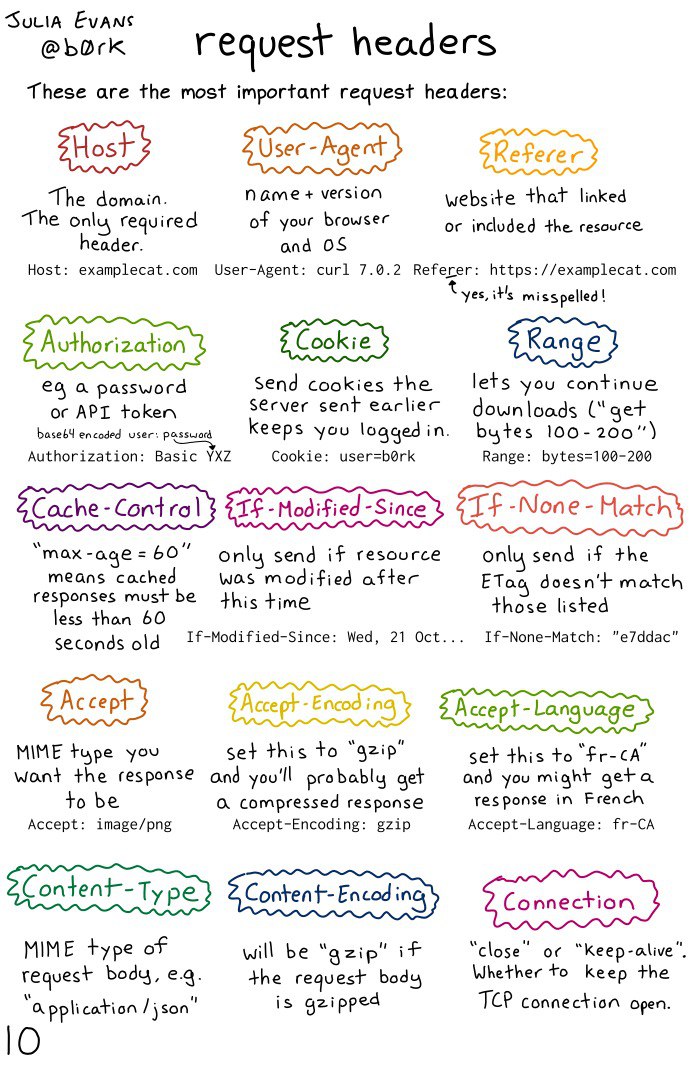🔗 HTTP / HTTP Messages
HTTP headers let the client and the server pass additional information with an HTTP request or response. An HTTP header consists of its case-insensitive name followed by a colon (
:), then by its value. Whitespace before the value is ignored.
Headers can be grouped according to their contexts:
- Request headers: Contain more information about the resource to be fetched, or about the client requesting the resource.
- Response headers: Hold additional information about the response, like its location or about the server providing it.
- Representation headers: Contain information about the body of the resource, like its MIME type, or encoding/compression applied.
- Payload headers: Contain representation-independent information about payload data, including content length and the encoding used for transport.
Most common headers
Тут приведены только наиболее часто встречающиеся мне заголовки. Полный список см. на MDN.

Authentication
Authorization: Contains the credentials to authenticate a user-agent with a server.
Caching
…
Conditionals
ETag: A unique string identifying the version of the resource. Conditional requests usingIf-MatchandIf-None-Matchuse this value to change the behavior of the request.
Connection management
Connection: Controls whether the network connection stays open after the current transaction finishes.Keep-Alive: Controls how long a persistent connection should stay open.
Content negotiation
Controls
…
Cookies
Cookie: Contains stored HTTP cookies previously sent by the server with theSet-Cookieheader.Set-Cookie: Send cookies from the server to the user-agent.
CORS
…
Downloads
Content-Disposition: Indicates if the resource transmitted should be displayed inline (default behavior without the header), or if it should be handled like a download and the browser should present a “Save As” dialog.
Message body information
Content-Length: The size of the resource, in decimal number of bytes.Content-Type: Indicates the media type of the resource.
Proxies
…
Redirects
Location: Indicates the URL to redirect a page to.
Request context
Referer: The address of the previous web page from which a link to the currently requested page was followed.Referrer-Policy: Governs which referrer information sent in theRefererheader should be included with requests made.User-Agent: Contains a characteristic string that allows the network protocol peers to identify the application type, operating system, software vendor or software version of the requesting software user agent.
Response context
Allow: Lists the set of HTTP request methods supported by a resource.Server: Contains information about the software used by the origin server to handle the request.
Range requests
…
Security
…
References
📂 HTTP | Последнее изменение: 14.05.2024 21:52